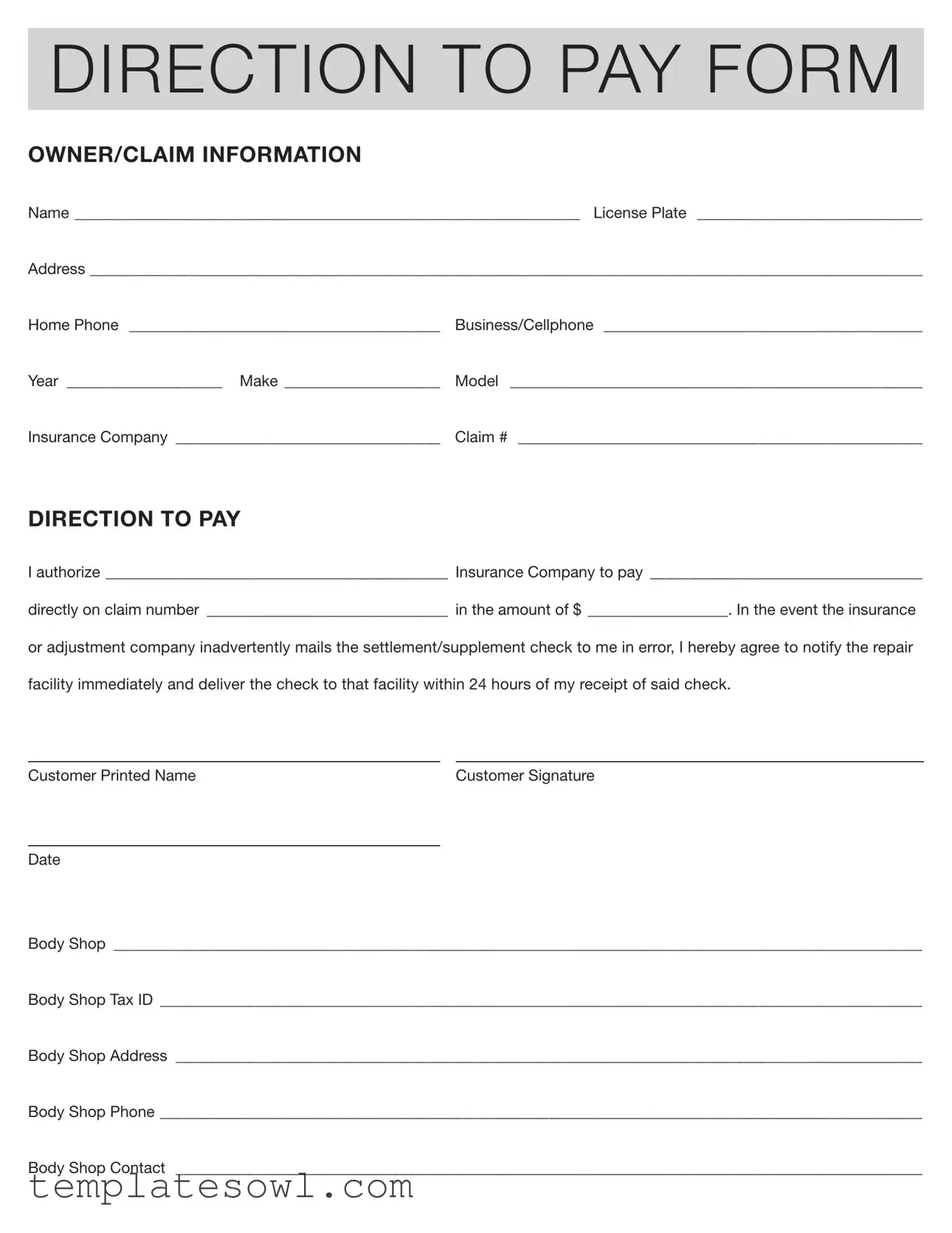What is the Authorization and Direction Pay form?
This form is used to authorize an insurance company to pay a designated body shop directly for repairs related to a claim. It ensures that the payment is handled properly and expedites the repair process.
Who needs to fill out the Authorization and Direction Pay form?
The form must be completed by the owner of the vehicle who is making a claim with their insurance company. This includes providing details such as the vehicle's license plate, make, model, and claim information.
What information is required on the form?
Users must provide their personal information, such as name, address, and contact numbers. Additionally, details about the vehicle, including the year, make, and model, as well as the insurance company and claim number, are necessary. The body shop’s information is also required for the payment to be processed correctly.
How does the payment process work?
Once the form is filled out and submitted, the insurance company will issue a payment directly to the designated body shop. The form gives the body shop the authorization to receive payment on the owner’s behalf.
What happens if the insurance company sends the check to me instead of the body shop?
If the insurance company accidentally sends the payment check to the vehicle owner, they must notify the body shop immediately. The check must then be delivered to the body shop within 24 hours of its receipt to avoid any delays in repairs.
Can I revoke the Authorization and Direction Pay form after it has been submitted?
Revocation of the authorization may be possible, but it is important to contact the insurance company and client representative to discuss the circumstances. Compliance with any requirements or processes set forth by the insurance company will be necessary.
What if the body shop can't complete the repairs?
If the body shop is unable to complete the repairs for any reason, the vehicle owner should contact their insurance company. The owner may need to fill out another form or change the repair facility for payment purposes.
Is there a specific time frame for the payment to be processed?
The time frame for payment can vary based on the insurance company’s policies and procedures. Generally, payments are processed as quickly as possible once all necessary forms are submitted and approved.
Do I need to sign the Authorization and Direction Pay form?
Yes, the vehicle owner is required to sign the form to confirm their authorization for payment to the designated body shop. The signature verifies the agreement between the owner and the insurance company.
Can I use this form for any type of claim?
This form is specifically designed for auto insurance claims related to vehicle repairs. It is important to ensure that the body shop and claim meet the requirements outlined by the insurance policy before proceeding.

